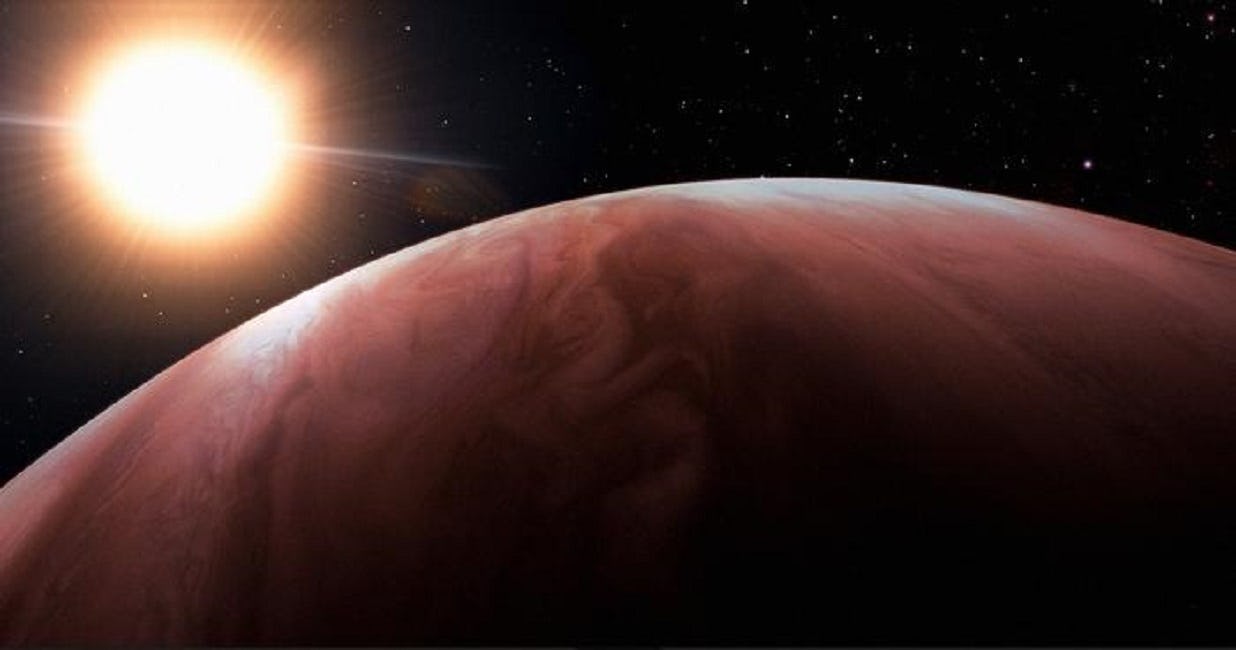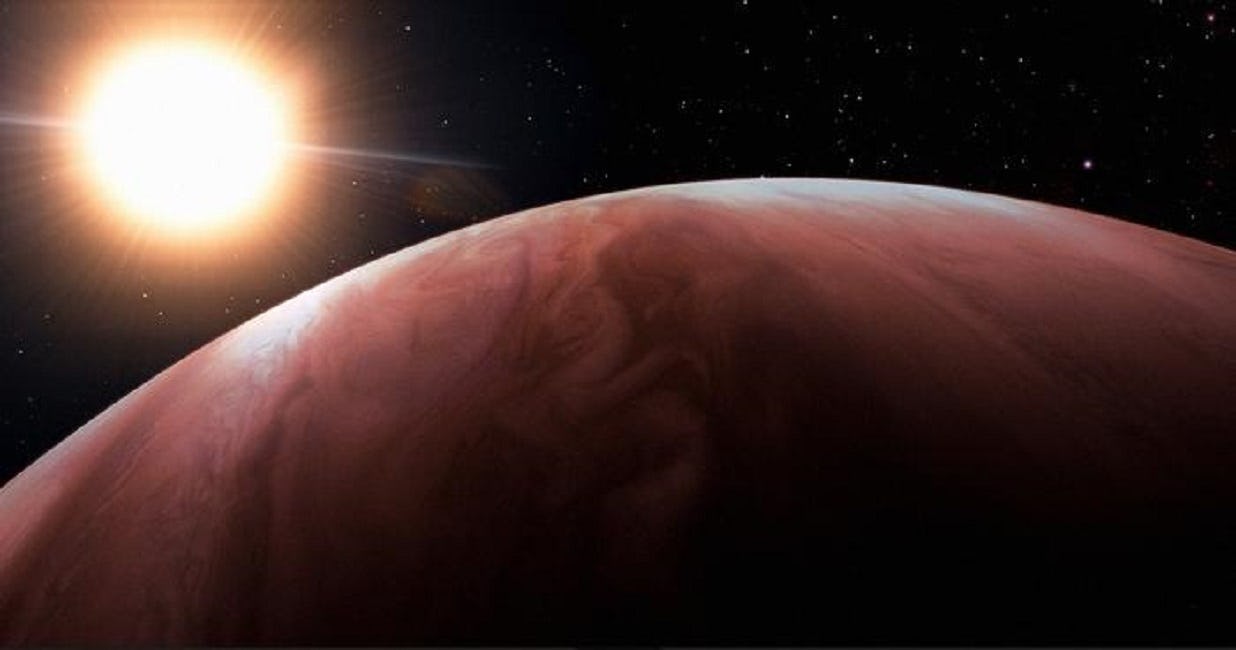
Astronomers have caught a cannibal planet red-handed.
Around 634 light years away, a murderous monster lurks. Giant planet WASP-76b is a bizarre place where the scorching hot atmosphere is full of vaporized metal, and it rains iron on the eternally dark night side. And now a team of astronomers have found evidence that the gas giant once swallowed up a hapless neighboring planet similar to Mercury.
They published their findings in the journal Nature.
It’s a Planet-Eat-Planet Universe Out There
Most of what’s so weird — and extremely metal, in both senses of the word — about WASP-76b boils down to the fact that the planet is really, really hot. It orbits a star that’s only a little bigger and a little hotter than our own Sun, but WASP-76b skims 12 times closer than Mercury does to our Sun. The planet is as hot as the surface of a small star in its own right, around 4,000 degrees Fahrenheit. That’s hot enough to vaporize metals like iron, nickel, and even barium.

That’s good news for astronomers like the University of Montreal’s Stefan Pelletier and his colleagues, because clouds of metal gas in the planet’s upper atmosphere are easy to see with telescopes like the Gemini North Observatory. On cooler gas giants, like Jupiter and Saturn, heavy elements like iron and magnesium tend to settle into the deeper layers of the planet, out of sight. That’s why we still don’t know exactly how much of those heavy elements Jupiter is hiding in its interior.
Pelletier and his colleagues measured the spectrum of light from WASP-76b, which revealed the amounts of 11 different chemical elements (including chromium, iron, magnesium, and nickel) in the gas giant’s upper atmosphere. The relative amounts of those elements can reveal what kind of material originally formed a planet, and what it’s accreted, or swallowed, since. If you’re a planet, you really are what you eat. In WASP-76b’s case, its chemical makeup was mostly very similar to its host star, and to our Sun, which means it formed from the same disk of gas and dust as its star. That’s pretty much what astronomers would expect.
However, Pelletier and his colleagues also spotted some incriminating evidence. It turns out that there’s much more nickel floating around WASP-76B’s atmosphere than there should be, and that extra nickel may have once been the inner layers of a rocky little world very similar to Mercury. At some point in the star system’s past, the hapless planet may have passed too close to its much larger neighbor and been pulled in by the gas giant’s immense gravity.
And now its remains are smeared across WASP-76b’s upper atmosphere.







